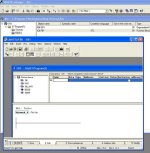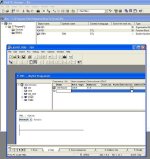mainstreetmark
Member
I have a Siemens project to do in Step 7. I've never used or been trained in it, but i've been pouring over various manuals, pdfs, websites, and threads on this site. But, I need a bit of a push a this point:
Basically, I have (at least) 10 breakers to control, so I thought I'd roll all the analog and digital points up into a UDT and pass that into an add-on instruction (which, I guess, becomes a FB in S7). In a nutshell, I want a single set of ladder logic to control at least 10 different real-world components.
I'm getting no where, so I have just a few questions to help push me in the proper direction:
- Once you create a a UDT, it appears you can't make changes after you have created a data block out of it. Is this really true? I have to have every single point defined in advance?
- So, I create a UDT, then I create a data block derived from the UDT. Then I make a FB where an In-Out is of type UDT1. Then, I guess, I attempt to drop that new FB into OB1 and pass it the data block? It doesn't seem to show up that way.
- Should I make another OB that hooks up the physical I/O to the Data Blocks derived from the UDT, one for each real-world breaker?
Thanks, as always.
Basically, I have (at least) 10 breakers to control, so I thought I'd roll all the analog and digital points up into a UDT and pass that into an add-on instruction (which, I guess, becomes a FB in S7). In a nutshell, I want a single set of ladder logic to control at least 10 different real-world components.
I'm getting no where, so I have just a few questions to help push me in the proper direction:
- Once you create a a UDT, it appears you can't make changes after you have created a data block out of it. Is this really true? I have to have every single point defined in advance?
- So, I create a UDT, then I create a data block derived from the UDT. Then I make a FB where an In-Out is of type UDT1. Then, I guess, I attempt to drop that new FB into OB1 and pass it the data block? It doesn't seem to show up that way.
- Should I make another OB that hooks up the physical I/O to the Data Blocks derived from the UDT, one for each real-world breaker?
Thanks, as always.






